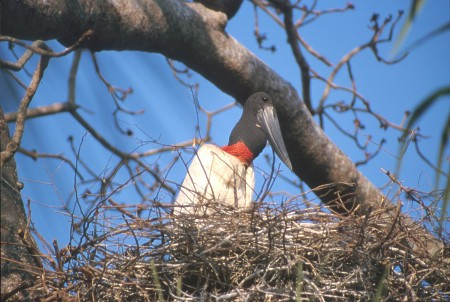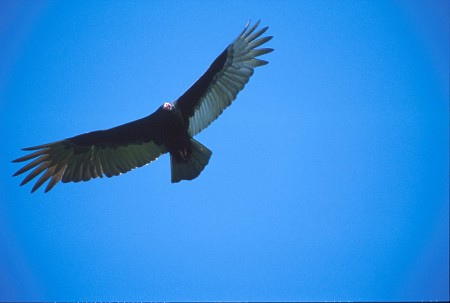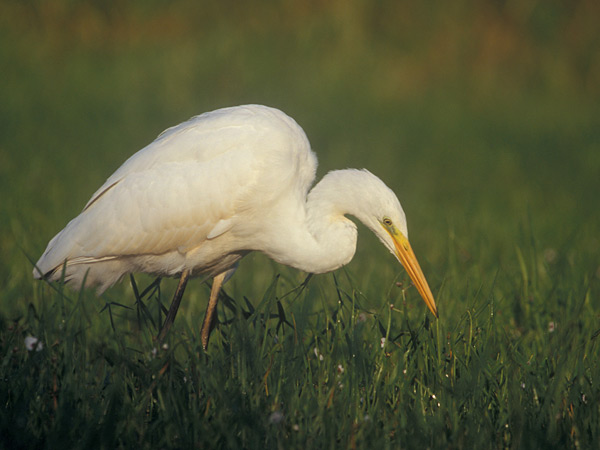Great Egret
Locally known as the Garça Branca Grande, the Great Egret, or White Heron is one of the world's most widely distributed wading birds. The species ranges (albeit with modest variations) across wetlands in the Americas, Europe, Africa and Oceania. It's a common sight in the Pantanal, where it's the second-largest heron species, standing up to 1 metre tall, and a wingspan reaching 1.7 metres. Large groups can been seen gathered around shallow ponds and lakes, especially during the dry season.
Great Egrets are always popular thanks to their graceful and elegant appearance - particularly during the breeding season when they exhibit the long delicate ornamental plumage used for their courtship rituals. During the late nineteenth century, demand for these feathers (known as nuptial plumes or "egretas") were used for making ladies' hats) almost led to the extinction on the species in North America - spurring the creation on the conservation movements, such as the National Audubon Society, and some of the first environmental laws. Although the Great Egret is white overall, there are other subtle colour changes that occur during the breeding season - when its normally yellow facial skin becomes green, and its bill turns mostly black. In contrast to it's white feathers, it's legs and feet are black or sooty grey. The males and females are almost identical, although males tend to be larger.
As the second-largest heron species, the Great Egret stands up to 1m tall, with a wingspan of up to 1.7m. The average weight for adults is 1 kg, but can reach up to 1.5 kg. As with all herons, the Great Egret flies with its neck retracted in an S-shape - differing from other species such as cranes, ibises and spoonbills, which fly with their necks extended. Aside from its size, Great Egrets can be distinguished from other egret species by the length of it's neck - which is longer than it's body.
Great Egrets are commonly found in the wetland and marshy areas of the Pantanal, and along riverbanks. Although they usually eat fish, they're opportunistic and will take almost anything they can fit in their bills. Hence, they're also commonly seen eating insects, crustaceans, small reptiles, and small rodents. The ability to vary its diet is an advantage in the Pantanal, since it isn't a uniform wetland - also containing large rivers, grasslands, and some forest. Competition with other species is reduced if they can co-exist by targeting different food sources. The Great Egret's usual means of attack is to slowly sneak up on its intended prey, with its neck held back in a tight S - or, alternatively, to stand motionless as the prey moves closer towards it. At the appropriate moment, the Great Egret's head quickly darts forward with its sharp bill to spear whatever had attracted it. In the dry season, its common to see Great Egrets congregating around drying lakes and streams - since this is when fish trapped in receding waters become an easy and plentiful meal for the Egrets and other Pantanal species.
Even though Great Egrets are quiet birds, they're social and will often nest together in large colonies - sometimes mixed in with other species. These nests are usually built up over flooded areas and can reach up to 50 m high - and typically run along the tops and bottoms of trees. The nests are constructed from sticks and dry branches, and then lined with dry grass. There are several large colonies within the Pantanal - which attract tourists and photographers - but which also attract predators such as boa constrictors, jacaré, and piranha which make a quick meal of any chicks unlucky enough to fall from the nest into the water below.
As the second-largest heron species, the Great Egret stands up to 1m tall, with a wingspan of up to 1.7m. The average weight for adults is 1 kg, but can reach up to 1.5 kg. As with all herons, the Great Egret flies with its neck retracted in an S-shape - differing from other species such as cranes, ibises and spoonbills, which fly with their necks extended. Aside from its size, Great Egrets can be distinguished from other egret species by the length of it's neck - which is longer than it's body.
Behaviour and Habitat
Great Egrets are commonly found in the wetland and marshy areas of the Pantanal, and along riverbanks. Although they usually eat fish, they're opportunistic and will take almost anything they can fit in their bills. Hence, they're also commonly seen eating insects, crustaceans, small reptiles, and small rodents. The ability to vary its diet is an advantage in the Pantanal, since it isn't a uniform wetland - also containing large rivers, grasslands, and some forest. Competition with other species is reduced if they can co-exist by targeting different food sources. The Great Egret's usual means of attack is to slowly sneak up on its intended prey, with its neck held back in a tight S - or, alternatively, to stand motionless as the prey moves closer towards it. At the appropriate moment, the Great Egret's head quickly darts forward with its sharp bill to spear whatever had attracted it. In the dry season, its common to see Great Egrets congregating around drying lakes and streams - since this is when fish trapped in receding waters become an easy and plentiful meal for the Egrets and other Pantanal species.
Even though Great Egrets are quiet birds, they're social and will often nest together in large colonies - sometimes mixed in with other species. These nests are usually built up over flooded areas and can reach up to 50 m high - and typically run along the tops and bottoms of trees. The nests are constructed from sticks and dry branches, and then lined with dry grass. There are several large colonies within the Pantanal - which attract tourists and photographers - but which also attract predators such as boa constrictors, jacaré, and piranha which make a quick meal of any chicks unlucky enough to fall from the nest into the water below.
Great egret. Credit: Wikimedia Commons/Lukasz Lukasik
Scientific Name
Ardea alba

Local Name
Garça-branca-grande

Description
Large heron with uniform white plumage, black legs, and long needle-like yellow bill. Stands up to 1m tall, with a wingspan up to 1.7m. In addition to its size, its distinguishable from other egret species by the length of its neck exceeding that of its body.
Commonly seen along riverbanks, streams and in wetland areas, and fishing in large groups during the dry season.
Great Egrets are migratory - although those within the Pantanal don't travel too far. They'll follow the receding of the annual floodwaters, or travel up towards the Amazon or into neighbouring Paraguay, Bolivia or Argentina. In some cases they may travel across to the Pacific side of the Andes.
Reproduction
The local breeding season for Great Egrets in the Pantanal is in the dry season, between July and October - and is the best time to see the large bird colonies. This breeding season coincides with the period having the best availability of food as Great Egrets take advantage of fish trapped in drying pools. Prospective pairs will court, putting on displays where they fan out the delicate breeding feathers on their backs.
Once the nest is made, or refurbished, the female lays a clutch of 3-6 eggs. These have a greenish or blue-green colour, and have an incubation period of 25-26 days. Both sexes will equally incubate the eggs, and take care of the chicks. At two and a half months of age, the chicks will leave their nest - looking very much like their parents. This generally coincides with the onset of the wet season - as which point the parents and the juveniles will migrate or disperse away from their colonies.
Quick Facts
- The Great Egrets delicate breeding feathers measure up to 50 cm long.
- Successful and adaptable. Great Egret species are now present tropical and sub-tropical regional worldwide, stretching up to the UK and down into New Zealand.
- Great Egrets range over most of the world's tropical regions, but there are four accepted subspecies with minor differences in size and facial skin/leg coloration.
European subspecies – Ardea alba alba;
American subspecies – Ardea alba egretta;
African subspecies – Ardea alba melanorhynchos;
Australasian subspecies – Ardea alba modesta. Some scientists treat this as a separate species in its own right. - Great Egrets happily co-exist and share colonies with other species such as spoonbills, cormorants, and other smaller egrets.
- Large egret colonies, in the Pantanal and elsewhere, can contain thousands of birds.
- Intelligent - videos exist of some birds dunking scraps of bread into the water to attract small fish.
Conservation Threats
Great Egrets are present throughout most of the world's tropical regions, and with a range that appears to be expanding. Aside from potential habitat loss due to the worldwide reduction in wetlands, no specific threats have been identified for this species. It's conservation status has been categorised by the IUCN as Least Concern.
Related Links








Banner image: (Wikimedia Commons/Andrea Westmoreland)
Egretta Alba (Wikimedia Commons/Lukasz Lukasik); Footer images: Tuiuiú, Turkey Vulture(Andrew Mercer); Amazon Kingfisher (Shutterstock/Ecoventurestravel)

Pantanal Escapes